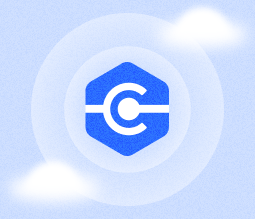While organizations have been progressively adopting remote access technology throughout the 21st century, the COVID-19 pandemic sparked a drastic increase in the uptake rate, as companies rushed to set up remote working stations.
By mid-2020, 46% of IT executives in medium-sized-to-large companies were already boosting their spending on managing remote network operations, while 43% were planning to expand their investments in the adoption of cloud-based management platforms.
The results, as you’ve probably figured already, have been so promising that 74% of CFOs are already considering shifting previously on-site employees to remote working positions even post COVID-19.
And that’s not all. Remote access is set to facilitate the trend hugely, to the point that, according to Blueface, remote working will be competing with office locations by the year 2025.
The only thing that might slow down the uptake is, of course, the disadvantages that come with remote access. Yes, that’s right - while remote access has numerous benefits, it also turns out it has its fair share of downsides.
Here’s each side of the coin...
Benefits of Remote Access
The following are the primary benefits of remote access.
Simplified Help Desk Tasks
One thing MSPs love about remote access is that it makes their customer-assistance tasks much easier.
They can, for instance, remotely troubleshoot their customers’ devices and network. This allows them to quickly identify issues and subsequently resolve them without traveling.
And that’s not all. By avoiding travel, service providers get to spend more time on their workstations attending to various customers. Remote access infrastructure now allows them to monitor and service different customers at once, which ultimately translates to great customer satisfaction rates.
Better Remote Working Capabilities
Remote access is also changing how employees work, as well as their overall productivity and job satisfaction.
For example, it continues to facilitate remote networking of corporate resources, which helps employees work flexibly. They can comfortably use their personal devices to access their office systems from anywhere at any time of the day or night.
What’s more, remote access allows them to collaborate freely across different locations. Employees who are stationed at different places can simultaneously contribute to the same project - while, at the same time, keeping tabs on other work developments in real-time.
According to studies conducted on American Express employees, this agile approach in the work environment saw remote workers increase their productivity by 43%. JD Edwards’ teleworkers, on the other hand, proved to be 20–25% more productive than their on-premise colleagues.
Further reading Agile MSP: The Concept Explained
Security
OK, I know this might seem misplaced featuring among the list of benefits. But, while we agree that remote access has its security challenges, we also acknowledge that it comes with several notable security benefits.
Consider, for instance, the infrastructure that goes into powering remote networks. One thing you’re bound to find in most systems is a well laid-out privileged access management (PAM) framework, which sets out the access rules. Each user account is accorded access privileges and permissions based on their job level in the organization.
Further reading IAM vs PAM vs PIM: Guide to Access Management
Then when the time comes to use the resources, remote access allows system administrators to monitor everything from the activity logs. Meanwhile, all the data being transmitted between endpoints is protected through encryption.
Reduced Costs
Although setting up a remote access network can be costly at first, the subsequent lifecycle costs are bound to be much lower than running an entirely on-premise system.
Take, for example, the maintenance costs involved. By leveraging a cloud-based management platform, organizations don’t have to worry about maintaining the underlying infrastructure. All that is handled by the service vendors.
Now, compare that with on-premise systems, which force organizations to maintain both hardware and software resources.
But, the savings don’t end there. They increase even further when we consider the indirect cost impacts associated with remote access.
In the U.S., for instance, businesses are said to save an average of $11,000 every year for every single part-time remote worker. And that doesn’t even take into account the cheaper costs of hiring this caliber of workers.
Employees, on the other hand, get to save as much as $2,000–7,000 a year, thanks to the accompanying reduced travel costs. And when you put all the businesses together, the nation would potentially save about $700 billion every year if employees could work remotely half the time.
Further reading Cost-Cutting Guide for MSPs
Disadvantages of Remote Access
The downsides to remote access include:
Increased Security Vulnerabilities
Remote access is a double-edged sword when it comes to system security. You see, although it comes with data encryption, access controls, and activity logging, it happens to introduce additional vulnerabilities that could be used as attack points.
You’ll notice that, for instance, it’s difficult to keep tabs on everyone accessing your system remotely. You can’t physically authenticate all the users. And that, of course, makes it easy for attackers to infiltrate the system using genuine accounts, and then leave unnoticed.
Already, 46% of remote access users have noticed an upsurge in phishing attacks since they rolled out their remotely networked systems.
In other cases, users end up leveraging compromised VPN services, which hackers then manage to take advantage of to gain unauthorized access. This can, in particular, be detrimental to systems that fail to protect sensitive data with PAM.
Because of such security vulnerabilities, the FBI’s Internet Crime Complaint Center is now getting 3,000–4,000 calls per day, up from 1,000 calls before the COVID-19 pandemic.
Further reading Data Security Checklist
Network Dependency
Remote access is only as good as your network. You need a stable Internet connection to maintain your workflow. Otherwise, even the slightest downtime can potentially affect your productivity.
Now, the sad thing is that this problem is much more widespread than you think. 84% of remote access users tend to lose connections to applications at least once a week, while 11% experience the problem on a daily basis. You could blame it on underinvestment by some companies.
Transitional Complexity
A fully remotely accessible network is not something that anyone can randomly set up. Even seasoned experts and managed service providers take days to piece together all the infrastructure resources and, ultimately, have everything working seamlessly.
If you plan to roll it out on a large scale, you’ll need additional software tools for IT asset management, as well as remote collaboration and communication, among other functionalities.
I guess that explains why 37% of IT executives admit that their employees didn’t have the right tools for remote access when they initially made the shift to remote working.
And, to be more specific, it turns out that during such transitions, employees principally experience three types of challenges. 35% of them struggle with videoconferencing apps, while 37% face challenges with Wi-Fi connectivity and reliability, and 38% experience issues with VPN access.
Over to You
Using these insights, you can now plan your remote access strategy by capitalizing on the positives - while at the same time optimizing everything to minimize the negative impacts.
And if you are currently setting up your remote network, consider using the MSP360 Managed Connect as a part of your infrastructure, as it’s a feature-rich remote assistance software built for IT teams and MSPs to easily resolve end-users’ IT issues in minutes.








